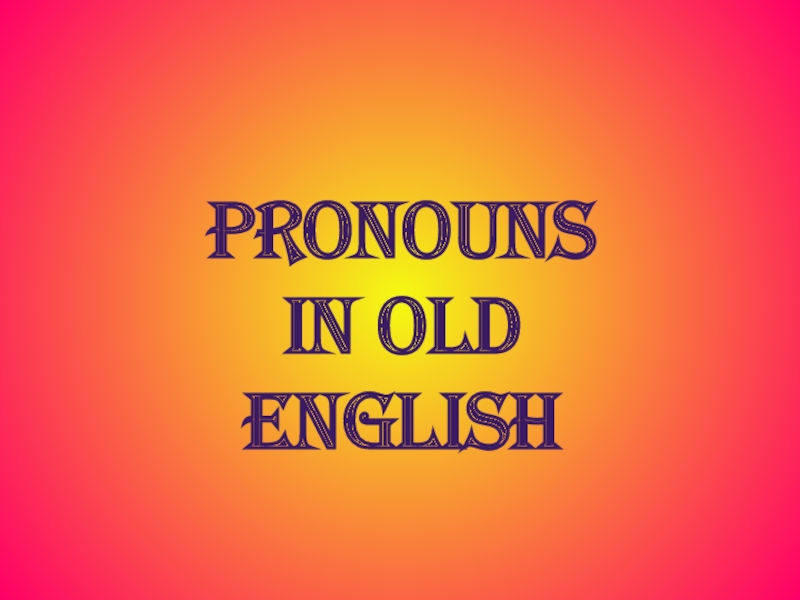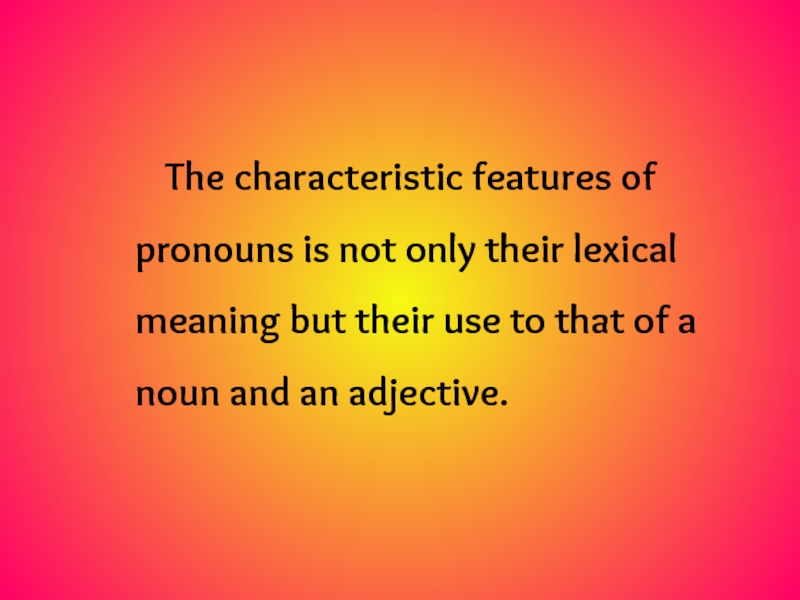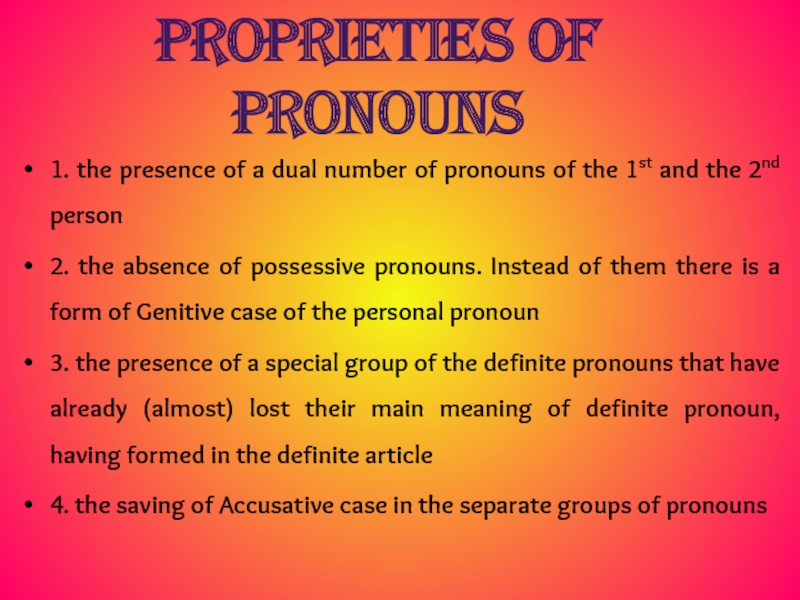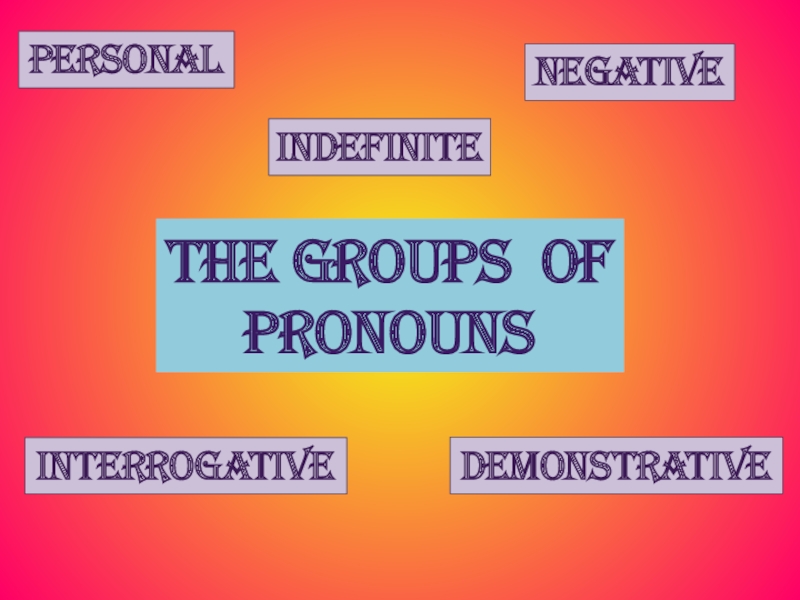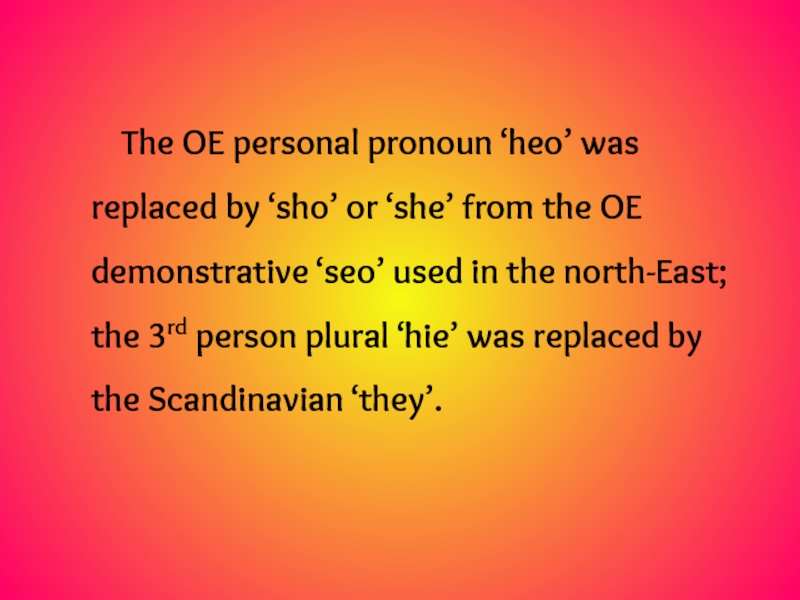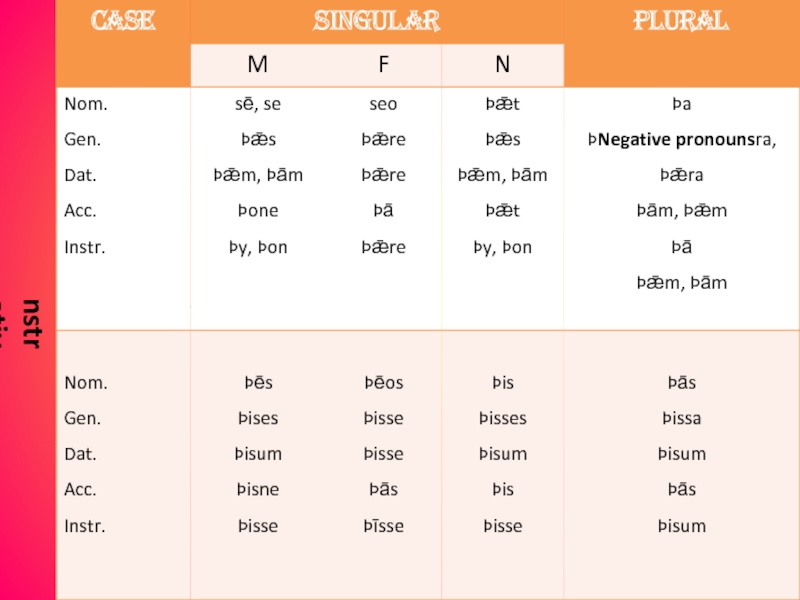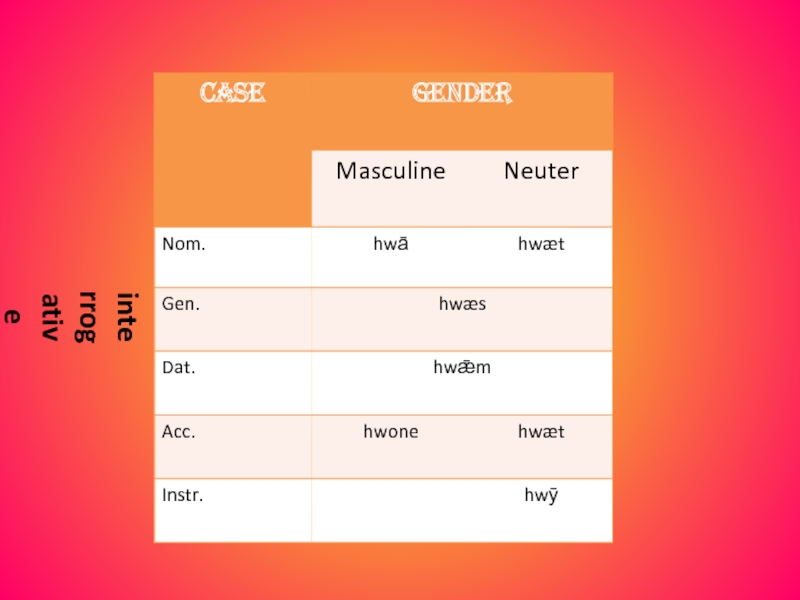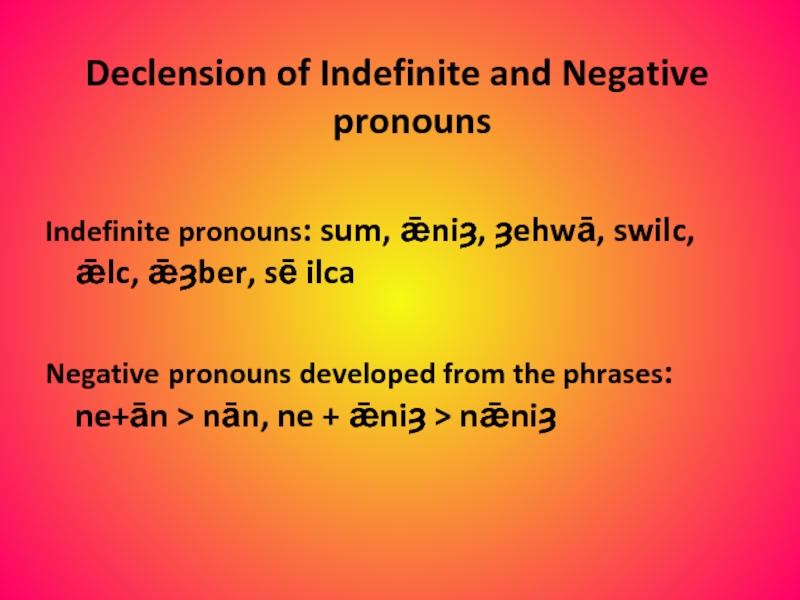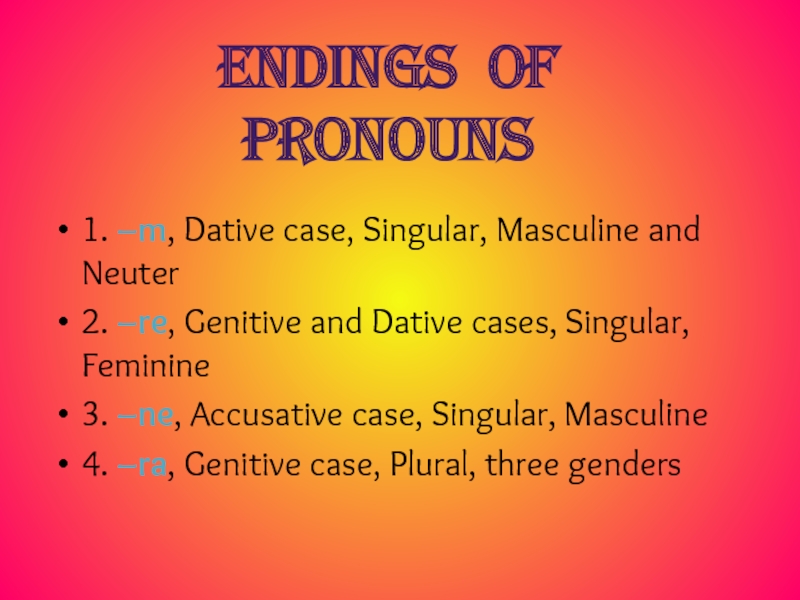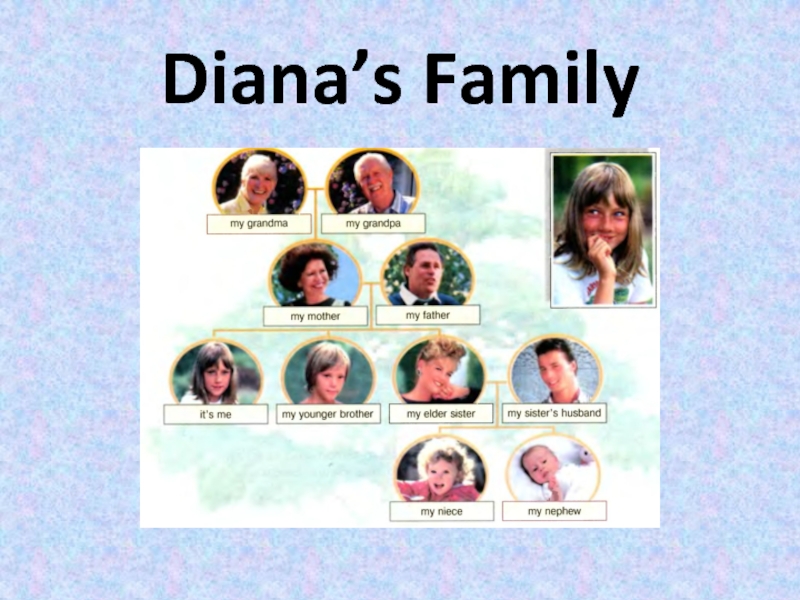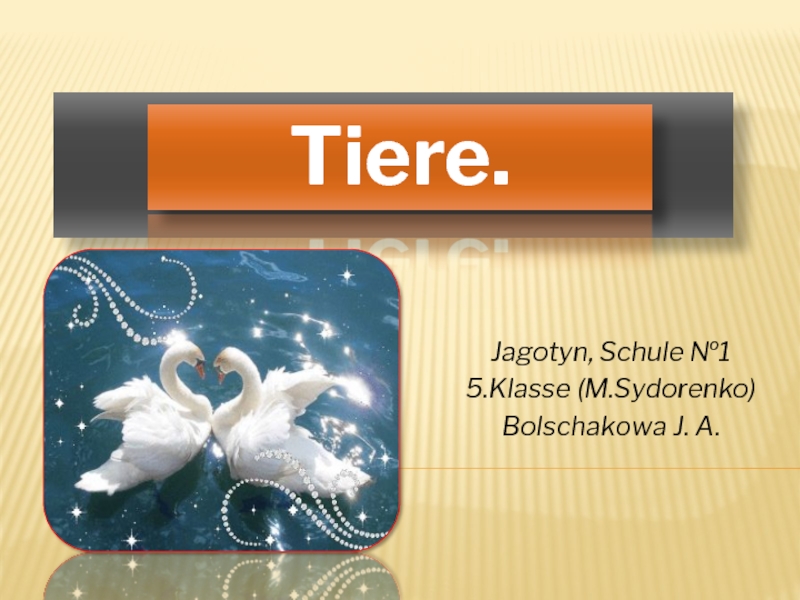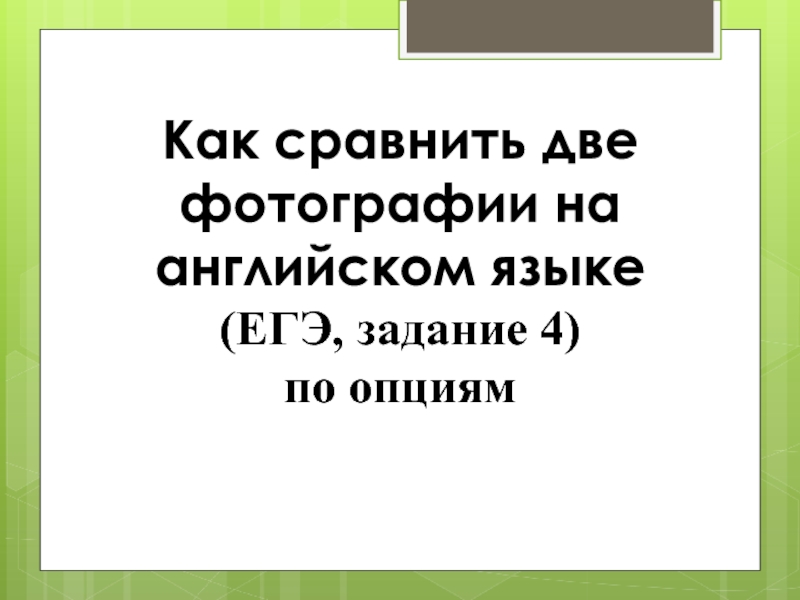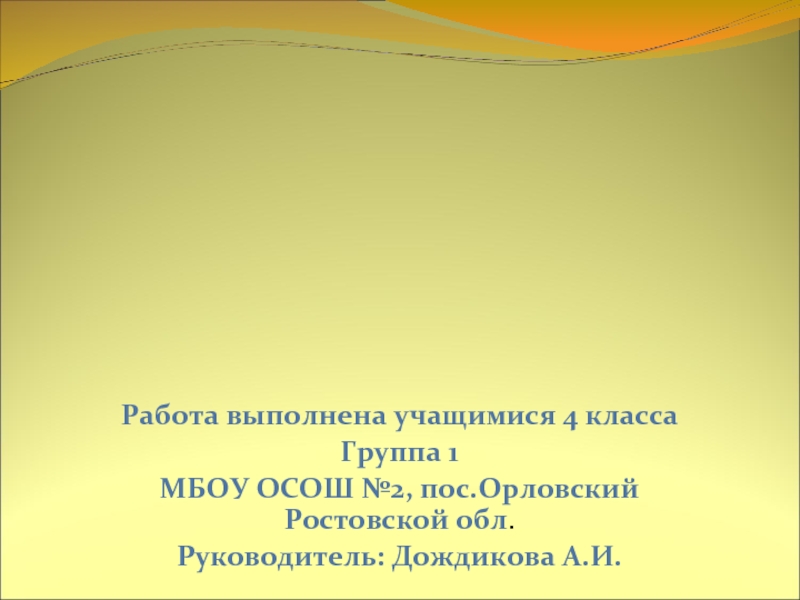Разделы презентаций
- Разное
- Английский язык
- Астрономия
- Алгебра
- Биология
- География
- Геометрия
- Детские презентации
- Информатика
- История
- Литература
- Математика
- Медицина
- Менеджмент
- Музыка
- МХК
- Немецкий язык
- ОБЖ
- Обществознание
- Окружающий мир
- Педагогика
- Русский язык
- Технология
- Физика
- Философия
- Химия
- Шаблоны, картинки для презентаций
- Экология
- Экономика
- Юриспруденция
Pronouns In Old English 11 класс
Содержание
- 1. Pronouns In Old English 11 класс
- 2. The characteristic features of pronouns is not
- 3. 1. the presence of a dual number
- 4. The groups ofPronounspersonaldemonstrativeinterrogativenegativeindefinite
- 5. Declension of personal pronouns
- 6. The OE personal pronoun ‘heo’ was replaced
- 7. Declension of demonstrative pronouns
- 8. Declension of interrogative pronouns
- 9. Declension of Indefinite and Negative pronounsIndefinite pronouns:
- 10. 1. –m, Dative case, Singular, Masculine and
- 11. Скачать презентанцию
The characteristic features of pronouns is not only their lexical meaning but their use to that of a noun and an adjective.
Слайды и текст этой презентации
Слайд 31. the presence of a dual number of pronouns of
the 1st and the 2nd person
2. the absence of
possessive pronouns. Instead of them there is a form of Genitive case of the personal pronoun3. the presence of a special group of the definite pronouns that have already (almost) lost their main meaning of definite pronoun, having formed in the definite article
4. the saving of Accusative case in the separate groups of pronouns
Proprieties of
Pronouns
Слайд 6The OE personal pronoun ‘heo’ was replaced by ‘sho’ or
‘she’ from the OE demonstrative ‘seo’ used in the north-East;
the 3rd person plural ‘hie’ was replaced by the Scandinavian ‘they’.Слайд 9Declension of Indefinite and Negative pronouns
Indefinite pronouns: sum, ǣniȝ, ȝehwā,
swilc, ǣlc, ǣȝber, sē ilca
Negative pronouns developed from the phrases:
ne+ān > nān, ne + ǣniȝ > nǣniȝ Слайд 101. –m, Dative case, Singular, Masculine and Neuter
2. –re, Genitive
and Dative cases, Singular, Feminine
3. –ne, Accusative case, Singular, Masculine
4.
–ra, Genitive case, Plural, three gendersEndings of
Pronouns
